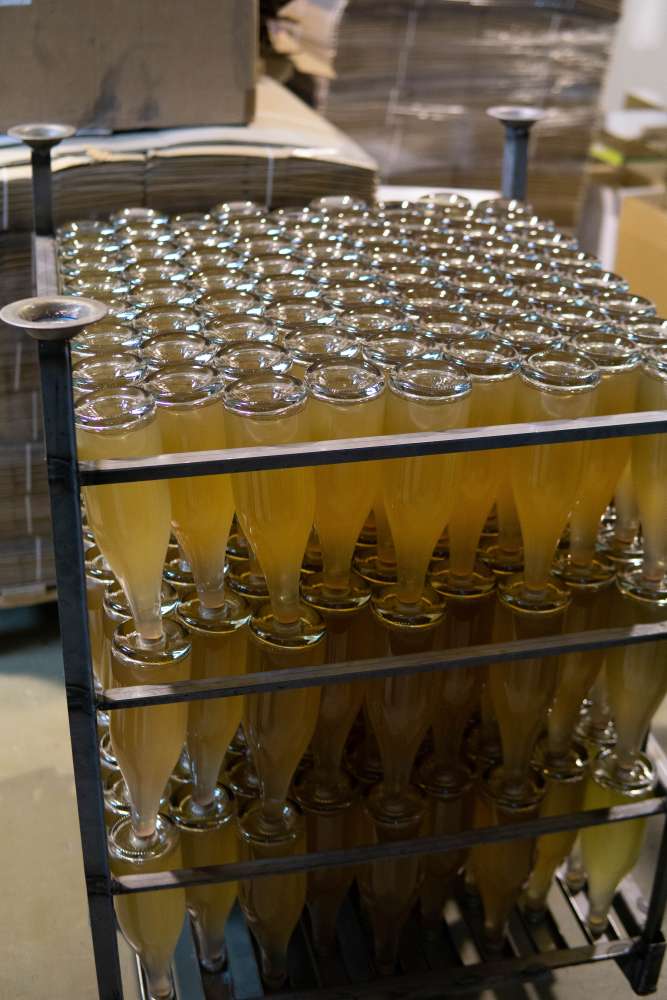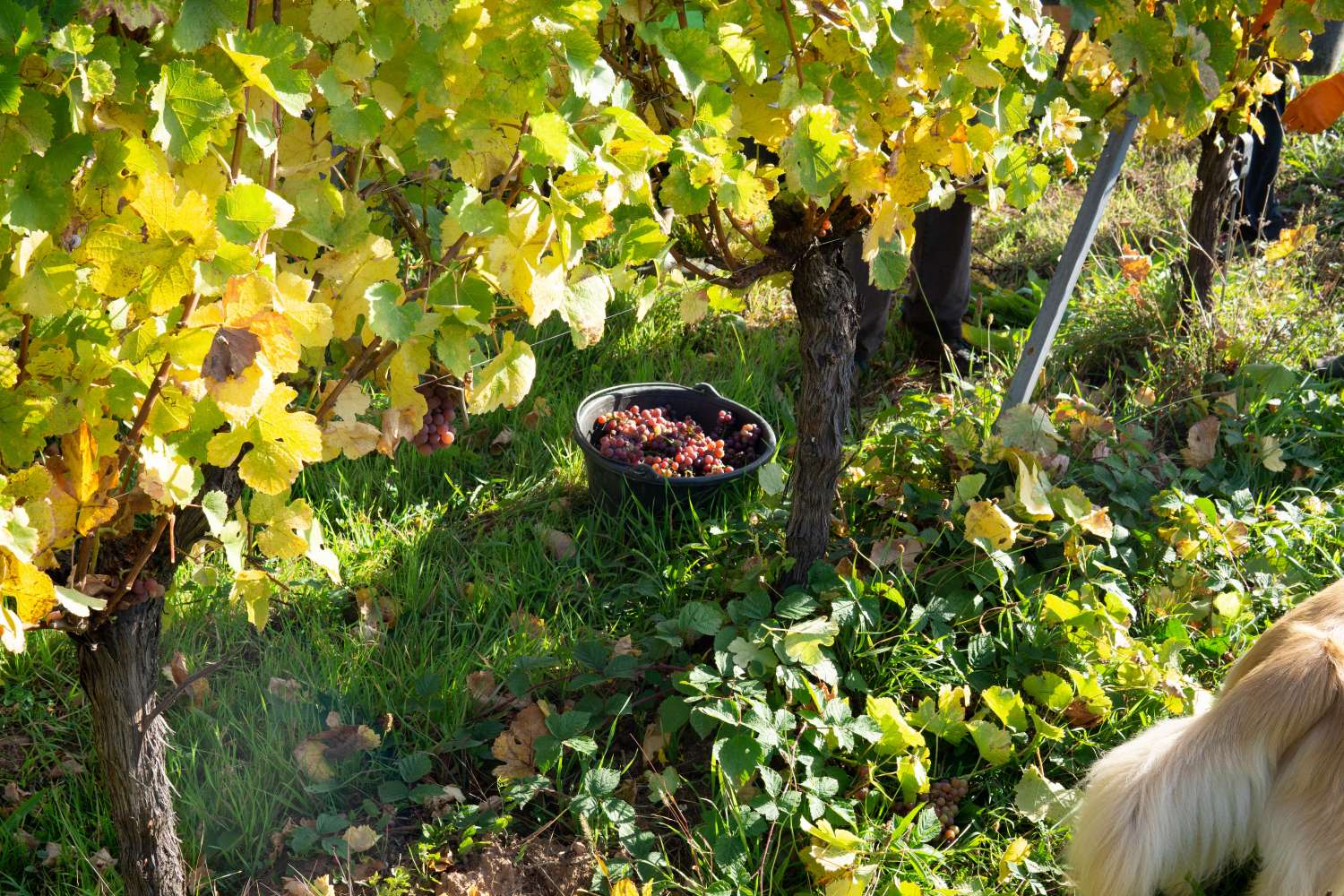Carbon Emissions In Natural Winemaking – Holly Berrigan, MYSA
Carbon Emissions In Natural Winemaking – by Holly Berrigan, MYSA
Natural wine is often touted for its environmental practices, creating less waste, and avoiding chemical use. These things are all true, and a big part of why I work exclusively with natural wines for our company. That said, there are certainly many areas that need further examination in the natural wine space before we can truly applaud the natural wine category for being less carbon-intensive than conventional wines.
Background
Before we dive into ways to reduce carbon emissions in wine, I want to set a baseline for estimated emissions from both conventional and natural wine.
Conventional Wine
In conventional wine, each bottle accounts for up to 1.2 kilograms of carbon dioxide being released into the atmosphere (ifu Hamburg). This typically comes from the machinery and fuel used for planting, growing and harvesting. It also comes from bottling and shipping. For context, this means that a pallet of conventional wine is equivalent to up to one acre of trees to sequester it.
Natural Wine
These numbers are not as easy to come by, as there’s no official definition of natural wine. But, taking the math from the conventional wine and subtracting the areas that machinery is not used it’s likely safe to say that each bottle likely accounts for up to .8 kilograms of carbon dioxide. While less machinery use is helpful, the shipping and bottling impacts are relatively equal.
Now let’s take a deeper dive into where these emissions are coming from and ways to potentially lessen them:
Grape Growing
This is an area where natural winemakers may get the highest marks for carbon emissions. Because most natural wine makers choose to eschew common practices like machine harvesting or the use of inorganic chemical sprays, the amount of pollutants that could go into the vineyard is quite small. While tractors and other machinery are still used to bring in harvest, potentially sort the grapes, and maybe press them (if they’re not using a basket press) the carbon impact of growing the grapes is likely the lowest contributing area in natural winemaking.
The Winery
The wine industry has heavily relied on glass bottles as a means for reliable packaging since the seventeenth century. These bottles typically depend on an incredible amount of fossil fuel-based energy and, while they can be recycled, it’s a fairly difficult process that a lot of winemakers opt not to do. Some winemakers do opt for recycled bottles, which certainly helps, or recyclable corks. There is a whole debate about issues with real cork vs ones made from recycled materials, but I’ll save that for another time, generally either option has its pros and cons and many natural winemakers are opting for stelvin closures or crown caps now.

We’ll talk about the issues of weight of the bottles in the next section, but new options like kegs, cans, and tetra packs are opening up a lot of doors for more environmentally friendly packaging options (for non-ageable wines, it should be noted aged wines will still need a glass bottle) and while natural winemakers are taking advantage of some of them, I’m surprised to not see more adoption of these options with natural producers.
The Transport Process
After the bottles are manufactured, they are transported in a (fuel burning) vehicle to a winery so they can be filled up with wine and packaged, then the winery will sell a large percentage of those wines in their glass bottles all across the world. Most of these stops can’t really be cut out, as we do all enjoy drinking wines from across the world so the trucking to and from the winery to the dock, on the boat, to another several trucks to your store/home is creating a lot of emissions. One option is to bottle closer to the final destination and send over the wine in large vessels. This can certainly save on the transport of the heavy glass and can be a good option for wineries that produce large amounts of volume.
As we alluded to above, while the transit may not be easy to avoid, the weight of the packaging can significantly impact the amount of emissions created. Thus, if a producer chooses a thick glass bottle over a thinner one they are typically increasing the weight by 10-25%. On the water this won’t make much of a difference in emissions, as they are much lower than truck or air freight, but could be a very significant decrease in emissions for those vessels. Additionally, less pallets with more cases also at least optimizes the amount of weight on the vessel, thus winemakers can work to create full pallets or mixed pallets instead of partial pallets as another helpful method.
Conclusion
Overall, natural winemakers get a good scorecard for working to reduce carbon emissions but once it leaves the winery there’s no difference from conventional winemakers. Vintners are doing a good job preserving the soil and not polluting with machinery or chemical sprays. Much of the winemaking process is done by hand, avoiding lots of machinery in the winery. The main area to explore for further improvements is likely in the space of wine vessels and I’m optimistic to see what trends and changes will happen in this arena for natural winemakers in the next few years.
A note from the consumer side is that you can also chose to drink locally. Every state in the US and almost all EU and south American countries produce wine, so there are likely options, and even natural options available to you! As with anything else, you don’t have to commit exclusively to local products, but the more you chose them over an import the less environmental impact it will have.
An article by Holly Berrigan of MYSA
Holly Berrigan
Founder


